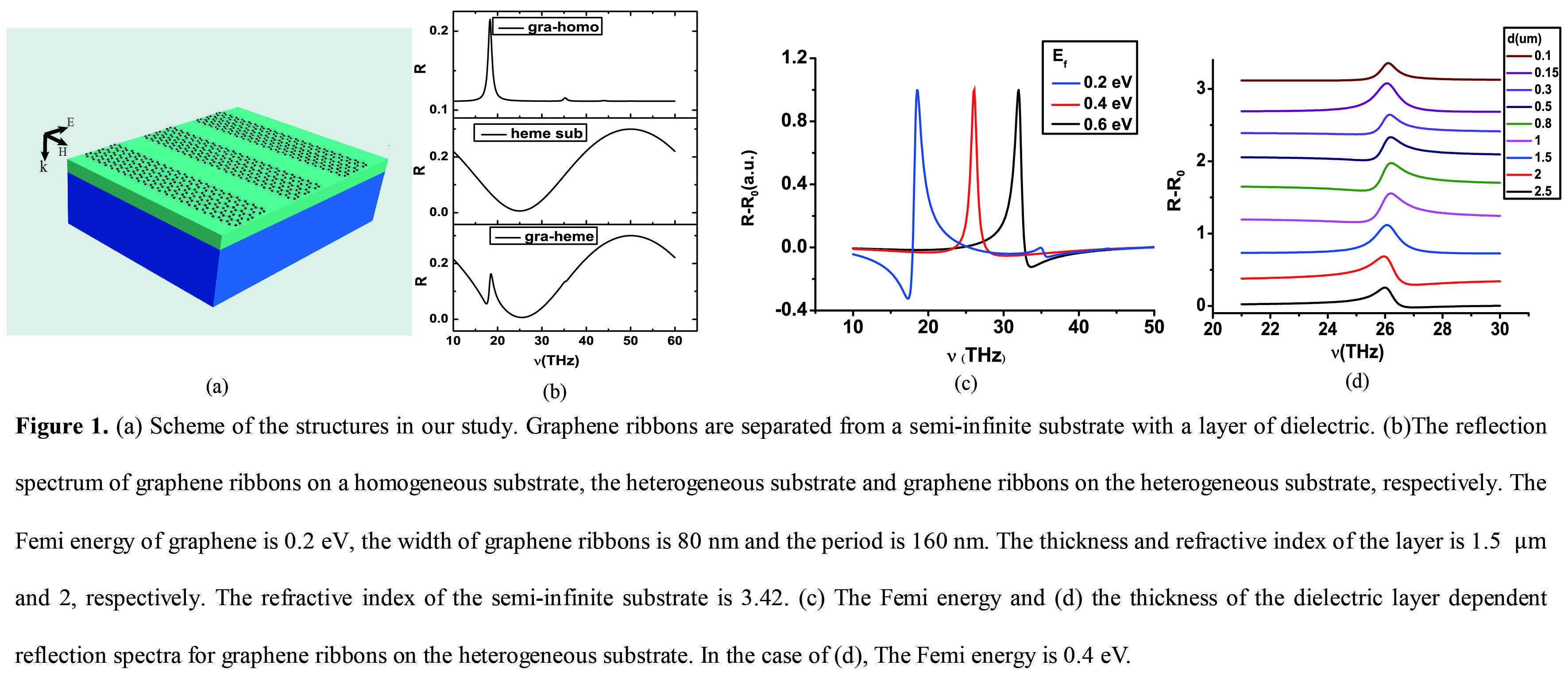
Realization of Fano Resonance in Graphene Ribbons on a Hetergeneous Substrate
The excitation of collective electron oscillations in plasmonic nanostructures have been realized in different structures[1]. The creation of sharp spectral features such as Fano resonances[2] presents important potential applications such as biosensing and plasmonic nanolasing. Fano resonances arise from the coherent interference of a narrow discrete resonance with a broad spectral line or continuum.
Here we show that for graphene ribbons where plasmons can be excited by a perpendicular incident light beam[3], if the substrate is heterogeneous and configured properly, apparent Fano resonances could arise. In further, the Fano resonance can be explained by the interference between plasmons in graphene ribbons and substrate cavity modes. Our structure is very simple and easily achievable, which is very promising for sensing application.
In fig. 1, we analyze a simple situation where graphene ribbons are separated from a semi-infinite substrate with a layer of dielectric. The plasmon resonance of graphene ribbons is at 18.3 THz, which has a Lorentz shape. However, multi-reflection will occur when the incident light passes through the heterogeneous substrate. Therefore a series of peaks and valleys in the reflection spectrum will appear, whose frequencies and periods are determined by the dielectric constant and the thickness of the dielectric layer. As the modes of the dielectric layer are spectrally broad and the plasmon mode is much narrower, their coherent interferences result in the asymmetric resonance shape. As shown in fig.1(c) and (d), by changing the thickness of the layer and the Femi energy of graphene, the asymmetry line shape can be tuned effectively.

References
[1] Anker, J. N. et al. Nat Mater. 7, 442–453(2008)
[2] Verellen, N. et al. Nano Lett. 9, 1663–1667 (2009)
[3] Ju, L. et al Nat Nanotechnol. 6, 630-634(2010)
ldw@mail.nankai.edu.cn
Powered by Eventact EMS